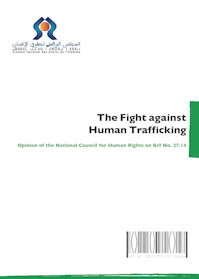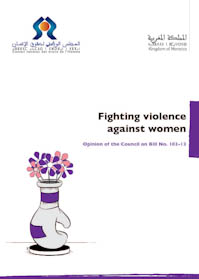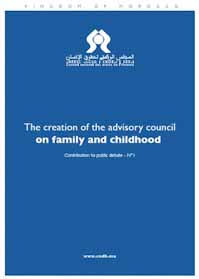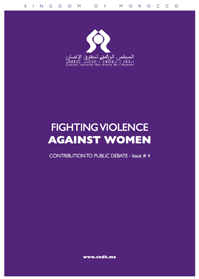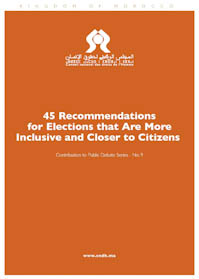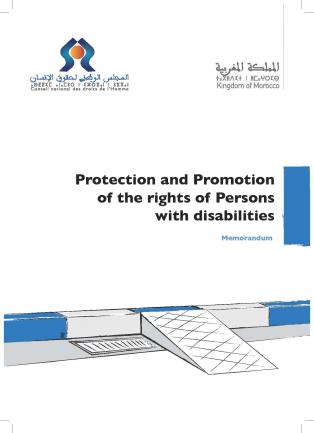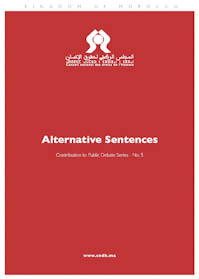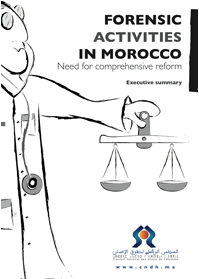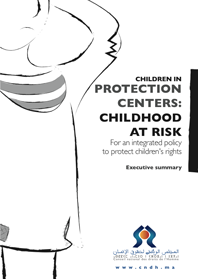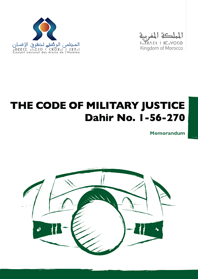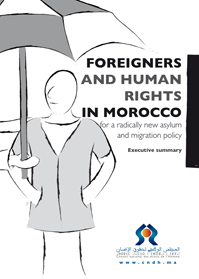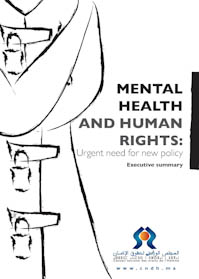International Experiences in Health Reparation
Reparations are often recommended in the form of health services, whether for physical problems or mental health needs. This is because victims and their family members often face critical health problems - whether resulting directly or indirectly from human rights abuses.At the same time, health care is a service that a state should strive to provide to all of its citizens. The International Covenant on Economic, Social and Cultural Rights stipulates that (Art. 12):
1. The States Parties to the present Covenant recognize the right of everyone to the enjoyment of the highest attainable standard of physical and mental health.
2. The steps to be taken by the States Parties to the present Covenant to achieve the full realization of this right shall include those necessary for:
… (d) The creation of conditions which would assure to all medical service and medical attention in the event of sickness.
Many international experiences of transitional justice adopted medical cover as a means of reparation, including Peru, Chili, Timor Leste, Ireland and Bosnia Herzegovina. However, the status of a country’s health care infrastructure, on the one hand, and on the other, the responsiveness of that system to the special needs of victims. Thus, many items should be taken into account when thinking about health reparations:
1 - Need for a comprehensive needs’ analysis before starting with any reparations health programs: This is necessary both to know how many survivors need help and what kind of help is mostly needed, and where;
2- Funding: even when some good work is being done, there is the problem of inconsistent funding;
3- Service delivery system too complex to be understood and easily used by the victims;
4- Need to reach out to victim population to make sure they know what are their rights and what provisions are they entitled to;
5- Lack of monitoring and measurable outcomes of the impact of the projects for victims and survivors;
6- The issue of victims historically backed mistrust towards government’s institutions. Deeply rooted mistrust in the government which, in many cases was involved in the human rights violations that brought the reparations, needs to be addressed.
7- Some important elements that have to be addressed in health reparations programs:
- Service delivery: Who is going to do it and how;
- Information and advice: how to reach into the affected population;
- Awareness raising: this is important to try to eliminate the element of marginalization that can come together with the benefits of a health reparations program.
8- The key health area is primary care;
9- The importance of “mainstreaming” attention to victims into all government’s policies instead of setting up a specific, limited program;
10- There is no “one size fits all” formula. Different countries have different factors and challenges to be considered when trying to implement a policy of health care reparations;
11- Gap between social services policy and reality. Policies are designed following western parameters and professional schools;
12- Monitoring: it is fundamental to monitor results of the implementation of healthcare reparations programs and to do it from the beneficiaries' perspective;
13- It is necessary to avoid the politicizing of reparation services provision.
Peru
The Truth and Reconciliation Commission of Peru recommended that all reparations programs included five distinct dimensions: a focus on the psycho-social aspects of the programs, an emphasis on participatory decision-making, sensitivity to intercultural needs, promotion of gender equality and an emphasis on the inherently symbolic nature of all reparations.
The comprehensive reparations plan is based on the following items:
- Symbolic reparations: public gestures (apologies), acts of recognition, memorials, acts of reconciliation (such as closing certain prisons and military bases closely associated with the internal armed conflict).
- Educational reparations: The general objective of this program is to provide access to educational opportunities for people who, as a result of the internal armed conflict, missed the possibility of receiving an adequate education or of completing their studies. This program would include waiving fees, scholarship program and adult education.
- Restitution of Citizens’ Rights: This aimed to review the legal status of the disappeared and the legal status of people with outstanding arrest warrants; to expunge the criminal, legal and police records of all innocent people unjustly imprisoned who have been acquitted, freed for having completed their sentences, been pardoned or given a presidential grant of clemency; and to ensure access to the legal status of personal documentation.
- Economic Reparations: The objective of this program is to provide economic compensation for moral and material damages suffered by victims and their families.
- Collective Reparations: The objective of this program is to contribute to the reconstruction and consolidation of collective institutions in affected communities that were partially or totally destroyed during the internal armed conflict.
- Health-oriented Reparations: This program included training qualified personnel to provide mental health care to victims of human rights violations, especially in the Andean and Amazonian regions; community intervention: this component should be implemented within the plan for collective reparations, first being applied in selected areas and then later expanded to include other affected communities; clinical intervention; and health program access.
This health reparation system in Peru guarantees the same level of free health care services that is provided to poor people and excludes mental health care. In fact, Peru’s capacity to attend to mental health care needs was extremely limited at the time when the Peruvian truth commission made its recommendations.
To provide the services that are available, the agency in charge of administering the service has implemented its own process of identifying victims, to avoid having to wait for the results of a longer-term process of documenting victims through a Reparations Council. Even though there have been some pilot programs to provide services specifically designed for victims, they have been only limited efforts with little coverage. Victims criticize health care reparations as being a service that fails to respond to their specific needs. They also note that most victims are already entitled to the public health care insurance because they are poor.
Chili
In Chili, the reach of the health reparation program is very broad. A Program of Reparation and Comprehensive Care in the Fields of Health and Human Rights (PRAIS) was launched in 1991. The Program seeks to guarantee to beneficiaries access free of charge to all the health services available from within the public health-care system and to offer specialized care for the treatment of sequelae in the area of mental health. Since then, more specialized health care programs, including psychological ones, have been set up. They are applied by multidisciplinary teams in various cities of the country. By 1992, 5007 patients would have benefitted from these programs.
Timor-Leste
In the Timor-Leste context, where the country is impoverished and recovering from a lengthy conflict and period of occupation, the precondition for any reparations in health care is first to build a universal system of health care with coverage throughout the whole country, including rural areas. The Commission for Reception, Truth and Reconciliation (CAVR) implemented an urgent interim reparations program that provided small funds to people with critical needs, including health needs. For serious injuries requiring surgery or prosthetics, the interim reparations program paid for the victims’ travel to Indonesia and their medical care there. On the other hand, “healing sessions” were organized by CAVR and FOKUPERS (a women’s organization). Because of lack of capacity to implement reparations, this was one of the strategies adopted by the CAVR to ensure action on some measures of attention to victims, through NGO partners. “The healing workshops..., which involved activities such as telling stories, singing, and other theater-type exercises, provided a safe and supportive environment where victims were helped to view healing as a life-long journey. They looked at the painful past, reflected on the well-being in their current lives, and expressed their hopes for the future, including what they needed to help repair their lives. Participants identified main themes of well-being—health, education, justice, economic well-being/livelihood, peace/security, and reconciliation—along with specific interventions and initiatives that could be undertaken by themselves, their communities, the government, NGOs, and so on. At the end of each workshop, these interventions were written up by CAVR staff and analyzed for inclusion in the commission’s recommendations.
“The healing workshops created an environment where women and men could come together respectfully and discuss some of the most significant things about their lives. More than 50% of participants were women, and one workshop was conducted as a women-only activity.
Now, as the country grapples with trying to find ways to provide reparations to the victims who are least able to care for themselves, it will be a challenge to find ways to press two agendas: the need for services for all citizens, including victims; and some way to recognize within that attention, the special situation of victims. Policy-makers must also sort out whether they should encourage NGOs to carry out services or whether all reparations should be done by the state according to state standards of care.
Ireland
In 2004 the Northern Health and Social Services Board (NHSSB) Trauma Advisory Panel applied successfully to the Strategy Implementation Fund (SIF) for financial support for a pilot project to run in three sites in the NHSSB area. The project aimed to appoint a primary mental health worker tasked with assessing and treating people who had been traumatized by the troubles and who had been referred by primary care professionals. The concept of a Primary Care Link Worker Service was based on existing evidence that early intervention in mental health conditions; reduced the numbers of people developing more serious mental health problems, reduced the need for anti-depressant drugs, and reduced referral rates to mental health teams.
During the project, people presenting with depressive/anxiety conditions were referred directly to the specialist worker by the GP which meant they did not have to be placed on long waiting lists and have need of prescription drugs in the interim. Average therapy sessions were 2-4 per person. The first year evaluation of the project revealed that outcomes were extremely positive, showing that services delivered had impact on improving the patients’ quality of life.
Source: The ICTJ





